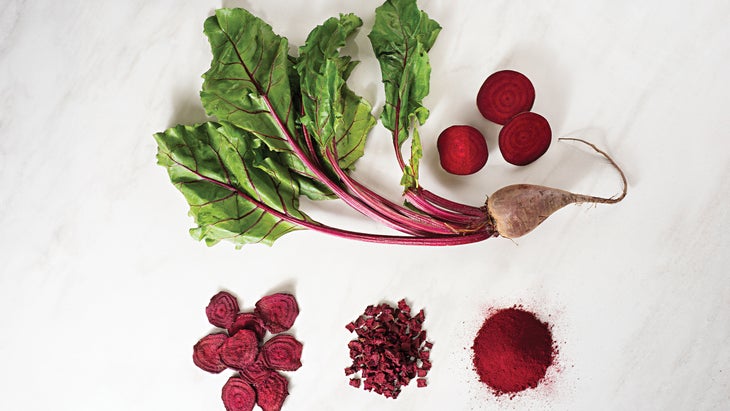Heading out the door? Read this article on the new Outside+ app available now on iOS devices for members! Download the app.
“Beans, beans the musical fruit. The more you eat, the more you toot. The more you toot, the better you feel. So eat your beans with every meal.”
This childhood rhyme probably is probably familiar to those of you who spent any time discussing sonorous bodily functions as a kid (in other words, everyone!). It’s true that certain foods like beans have a gaseous reputation, but does this toot-inducing tendency indicate an internal issue that ventures beyond a few laughable farts? Maybe, maybe not.
Recently, people have been making seemingly counterintuitive diet changes by replacing nutritional powerhouses like spinach and brown rice with less nutritious options such as iceberg lettuce and white rice. Their reasoning: to avoid ingesting anti-nutrients, naturally occurring compounds found in plants that have recently been vilified by certain medical professionals and Hollywood A-listers who claim they all but destroy your digestive system.
It sounds logical — if nutrients are good, then anti-nutrients must be bad. However, it’s really not that simple, and in order to make informed and educated decisions about your diet, you need to understand the nuances of anti-nutrients.
Nutrition Jekyll and Hyde
In living plants, anti-nutrients act as a natural defense system against invaders, including fungi, bacteria and bugs — think of them as Mother Nature’s pesticide. The trouble arises with human ingestion: Anti-nutrients bind to other micronutrients in your gut, preventing efficient absorption. “For example, oxalate [in spinach] binds to calcium during digestion, which interferes with the body’s absorption of that mineral,” explains Sharon Palmer, RD, author of The Plant-Powered Diet (The Experiment, July 2012).

Whereas you absorb about 30 percent of the calcium in a glass of milk, you’ll only absorb about 5 percent of the calcium in spinach. Similarly, you’ll absorb more of the zinc present in meat than you will from grains, nuts or seeds because of the anti-nutrient phytic acid, which ties up much of the zinc they provide. And lectin, an anti-nutrient found in legumes and whole grains, can bind to sugar molecules in your gut, thereby altering their function.
However, the negative impact of anti-nutrients is not consistent, and not only do their effects vary among individuals, but they also change dramatically depending on how a food is prepared. “Lectins, for example, are typically found in foods we don’t eat raw and are rendered less harmful by soaking, cooking or otherwise processing a food,” Palmer says. Indeed, you’d rarely consider spooning up dry quinoa or tossing back a handful of dry beans. Other methods such as steaming, boiling and fermenting leave many anti-nutrients null and void, thereby changing the nutritional value of a food by leaps and bounds.
Consuming foods with anti-nutrients won’t make you nutrient-deficient, either. You can and will absorb many essential minerals from these foods — just maybe not as much as you were expecting. For example, studies on vegetarians show that they generally aren’t deficient in minerals like iron and zinc, even though they consume plenty of foods with anti-nutrients such as lectins and oxalates, and other research has shown that habitual consumption of a high-phytate diet minimizes its inhibitory effect on the absorption of minerals such as iron and magnesium.
Worthy of Worry?
While anti-nutrients might sound scary, they’re really not that wicked. “Their dangers have been significantly overblown, and the benefits [of healthy eating] clearly outweigh the risks,” Palmer says. A large body of research supports eating more — not less — anti-nutrient-containing foods, she adds.

It’s also wise to do a little research before jumping to conclusions or blindly taking the opinions of a social media influencer as fact. For example, some people claim that lectins bring about a range of health woes, including inflammation, joint pain and various forms of gastrointestinal hell, but the evidence supporting those claims is razor thin. What’s more, certain anti-nutrients have research-backed health-hiking power: Lectins, which are being studied for their anti-cancer and anti-microbial properties, and tannins and glucosinolates have been shown to function as potent antioxidants, helping prevent free-radical damage and ward off a multitude of diseases. “You can’t focus only on the potential disadvantages [of anti-nutrients] because these compounds offer so many benefits,” Palmer says. In other words, the risk-to-benefit ratio is skewed toward the positive.
Gut Check
With all that said, many people do feel poorly after eating anti-nutrient-containing foods, but in many instances, it’s a case of mistaken identity. For example, if you bloat after eating a bowl of chili, it might not be because of the lectins in the beans but rather the oligosaccharides — a poorly digested carbohydrate — which are abundant in legumes. Or if a meal containing cauliflower leads to gas and discomfort, you are not necessarily reacting to the glucosinolates found in cruciferous veggies but could instead be sensitive to foods high in FODMAPs (fermentable oligosaccharides, disaccharides, monosaccharides and polyols).
Again, there are ways of preparing your food to mitigate your digestive distress, and in some cases following a low-FODMAP diet can help pinpoint which foods are bad news for your tummy. “But avoiding a whole category of healthful foods, which we know can help reduce the risks of some of the biggest diseases of our time, is not the answer,” Palmer concludes. “The one real risk in eliminating too many anti-nutrient-containing foods is that you’ll have a much tougher time in meeting your overall nutritional needs, especially if you’re very physically active.”

Annulling Anti-Nutrients
Use these simple workarounds so you can eat your broccoli and have your nutrients, too.
Glucosinolates/Goitrogens
Found in cruciferous vegetables like broccoli, Brussels sprouts and cabbage.
Pitfalls: They may inhibit the absorption of iodine and interfere with thyroid function, which could lead to weight gain and fatigue.
Benefits: Research has shown that glucosinolates and goitrogens help ward off numerous kinds of cancer and can act as antibiotics to help prevent infection.
Tame their power: Boiling or steaming these vegetables significantly diminishes their potency.
Lectins
Found in legumes, whole grains, nightshade vegetables (e.g., tomatoes, peppers, potatoes), mushrooms and peanuts.
Pitfalls: Lectins can interfere with the absorption of nutrients such as calcium, iron, phosphorous and zinc. They also may irritate your gut and cause bloating, indigestion and gas.
Benefits: Lectins can act as antioxidants to protect against free radicals, can work to control blood sugar, and also have been studied for their role in preventing cancer and boosting immunity.
Tame their power: Cooking essentially wipes out most of the lectins in a food, and soaking, sprouting or fermenting can significantly reduce their content.
A study published in Methods in Molecular Medicine found that boiling soybeans for as little as five minutes eliminated nearly all their lectin activity.
Oxalate (oxalic acid)
Found in dark leafy greens, rhubarb, potatoes, cocoa powder, nuts and beans.
Pitfalls: Oxalate binds to calcium, iron and magnesium, making them less available and may contribute to the formation of kidney stones.
Benefits: Foods containing oxalates have innumerable nutritional and digestive benefits, including vitamin A for eye health, vitamins C and E for immunity, and iron for energy and oxygen transport.
Tame its power: Steaming or boiling high-oxalate veggies and soaking and cooking legumes can significantly reduce their oxalate levels. Also, consider eating calcium-rich foods like dairy or a supplement a few hours before or after eating an oxalate-rich food.
Phytates (phytic acid)
Found in whole grains, seeds, legumes and nuts.
Pitfalls: Phytates can inhibit absorption of iron, zinc, magnesium and calcium and can cause gas and bloating. Some believe they contribute to leaky gut syndrome.
Benefits: Phytates help improve glucose response, fight cancer, repair DNA and reduce cholesterol.
Tame their power: Consuming an animal protein alongside a phytate-rich food can enhance zinc absorption, and soaking whole grains and nuts for a few hours before consuming them significantly reduces their phytate content. And since fermenting is a weapon against this anti-nutrient, it’s time to embrace the sourdough trend.
According to research published in the International Journal of Food Sciences and Nutrition, a combination of soaking, sprouting and fermenting decreased the phytate content of quinoa by 98 percent.
Tannins
Found in tea, coffee, wine, nuts, chocolate and certain spices such as cinnamon.
Pitfalls: Tannins bond with iron, making them less available for absorption. They also can cause bloating, diarrhea, constipation and other GI issues.
Benefits: Tannins work as antioxidants and anti-microbials to boost immunity and help fight off certain cancers.
Tame their power: Hold off on taking an iron-containing supplement alongside foods with tannins, and drink tea and coffee in between (instead of with) meals to reduce the chances of poor iron absorption. Consuming a vitamin-C-containing food also can increase iron absorption from plant-based sources, such as a red bell pepper alongside beans.
Fiber was once considered an anti-nutrient because it interfered with the absorption of certain vitamins and minerals. Now it's considered a dietary superhero and something we strive to ingest.